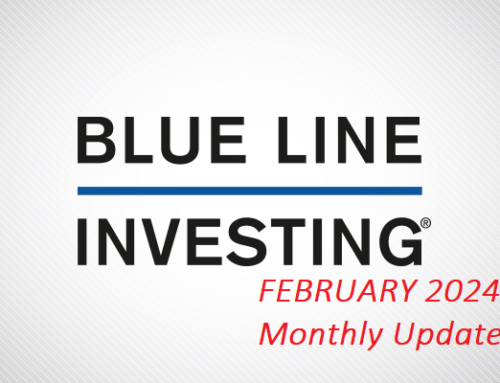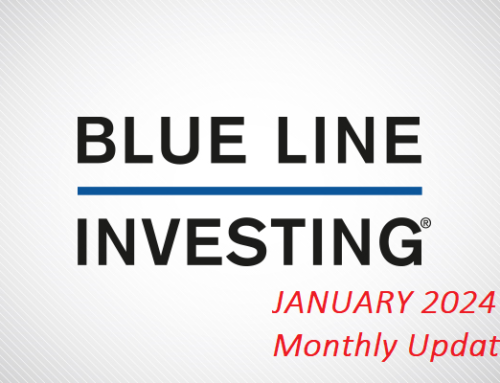
Commentary for month ending May 2018:
The US stock market, as measured by the S&P 500 Index² (S&P) finished the month of May closing +2.94% above the Blue Line, slightly higher from 1.47% at the end of April. With the S&P remaining above the Blue Line we continue to categorize the primary trend as Positive.
Do you wonder why we are so obsessed about monitoring price in relation to the Blue Line? It’s because since 1926 there have been 34 instances when price dropped below the Blue Line by at least 5%, or what we call a Phase 1: WARNING. Of those 34 instances, 20 became what we call Phase 2: FAILURES. Of those 20 instances, 9 became what we call Phase 3: CONFIRMATIONS. In other words, Phase 1’s became Phase 2’s 59% of the time, and Phase 2’s become Phase 3’s 45% of the time. Of these 9 historical occurrences, from the time when price first dropped below the Blue Line to the eventual end of the decline, the price decline has averaged -38.1%
What we find most interesting is in almost every one of the 9 historical occurrences the stock market decline followed the same pattern. We believe Warren Buffett said it best, “Rule No. 1: Don’t lose money. Rule No. 2: Never forget Rule No. 1.” While the BLUE LINE INVESTING™ process can not predict the future, it can help identify the early stages of the historical pattern that has coincided with significant stock market price declines. Following this process is how we attempt to follow the wise advice quoted above from the Oracle of Omaha. So our advice is simple – pay close attention to the price of most publicly traded investments in relation to the Blue Line.
Thanks for reading.
Jeff Link
Disclaimers:
¹ Blue Line Investing (BLI) is an alternative to traditional wealth management. BLI uses a disciplined, rules-based investment process to seek investment opportunities, regardless of whether financial markets are rising or falling. Based on technical analysis research, the process applies trend-following along with observations of economic moving averages of the market and other technical indicators.
² The S&P 500 Index is one of the most commonly followed equity indices, and many consider it one of the best representations of the U.S. stock market, and a bellwether for the U.S. economy. It is comprised of 500 large companies having common stock listed on the NYSE or NASDAQ. The volatility (beta) of the account may be greater or less than the index. It is not possible to invest directly in this index.
Technical analysis is a method of evaluating securities by analyzing statistics generated by market activity, such as past prices and volumes. Technical analysis attempts to predict a future stock price or direction based on market trends. The assumption is that the market follows discernible patterns and if these patterns can be identified then a prediction can be made. The risk is that markets may not always follow patterns. There are certain limitations to technical analysis research, such as the calculation results being impacted by changes in security price during periods of market volatility. Technical analysis is one of many indicators that may be used to analyze market data for investing purposes and should not be considered a guaranteed prediction of market activity. The opinions expressed are those of Blue Line Investing. The opinions referenced are as of the date of publication and are subject to change without notice. Blue Line Investing reserves the right to modify its current investment strategies based on changing market dynamics or client needs.
Past performance is not indicative of future results. This material is not financial advice or an offer to sell any product. The information contained herein should not be considered a recommendation to purchase or sell any particular security. This information is intended for educational purposes only.
Advisory services offered through Gordon Asset Management, LLC (GAM). GAM is an SEC-registered investment adviser. Registration does not imply a certain level or skill or training. More information about the advisor, its investment strategies and objectives, is included in the firm’s Form ADV Part 2, which can be obtained, at no charge, by calling (866) 216-1920. The principle office of Gordon Asset Management, LLC is located at 1007 Slater Road, Suite 200, Durham, North Carolina, 27703.




